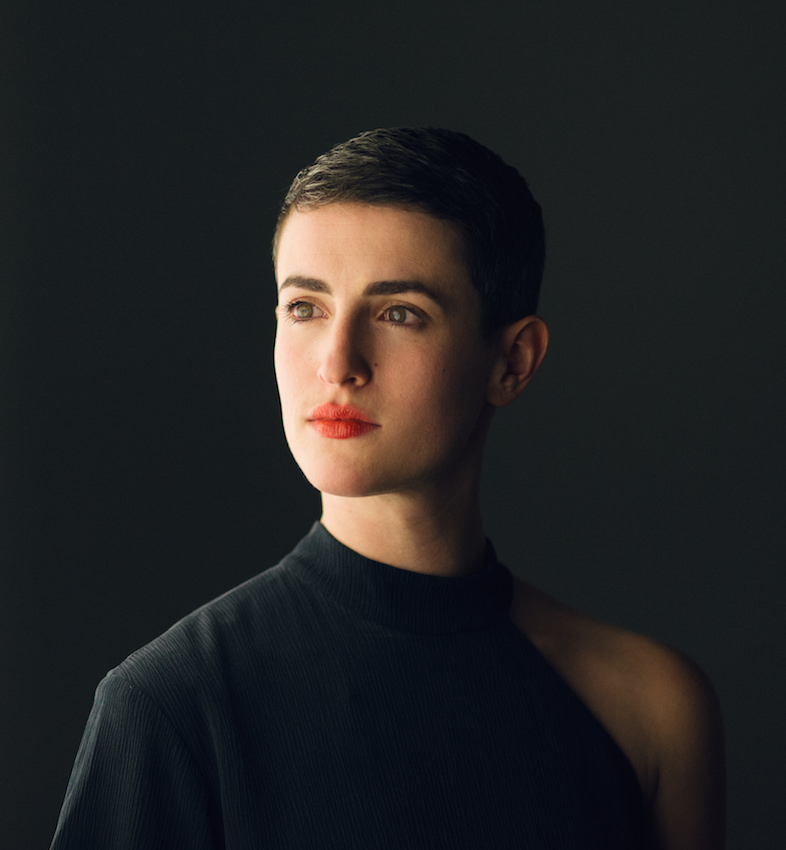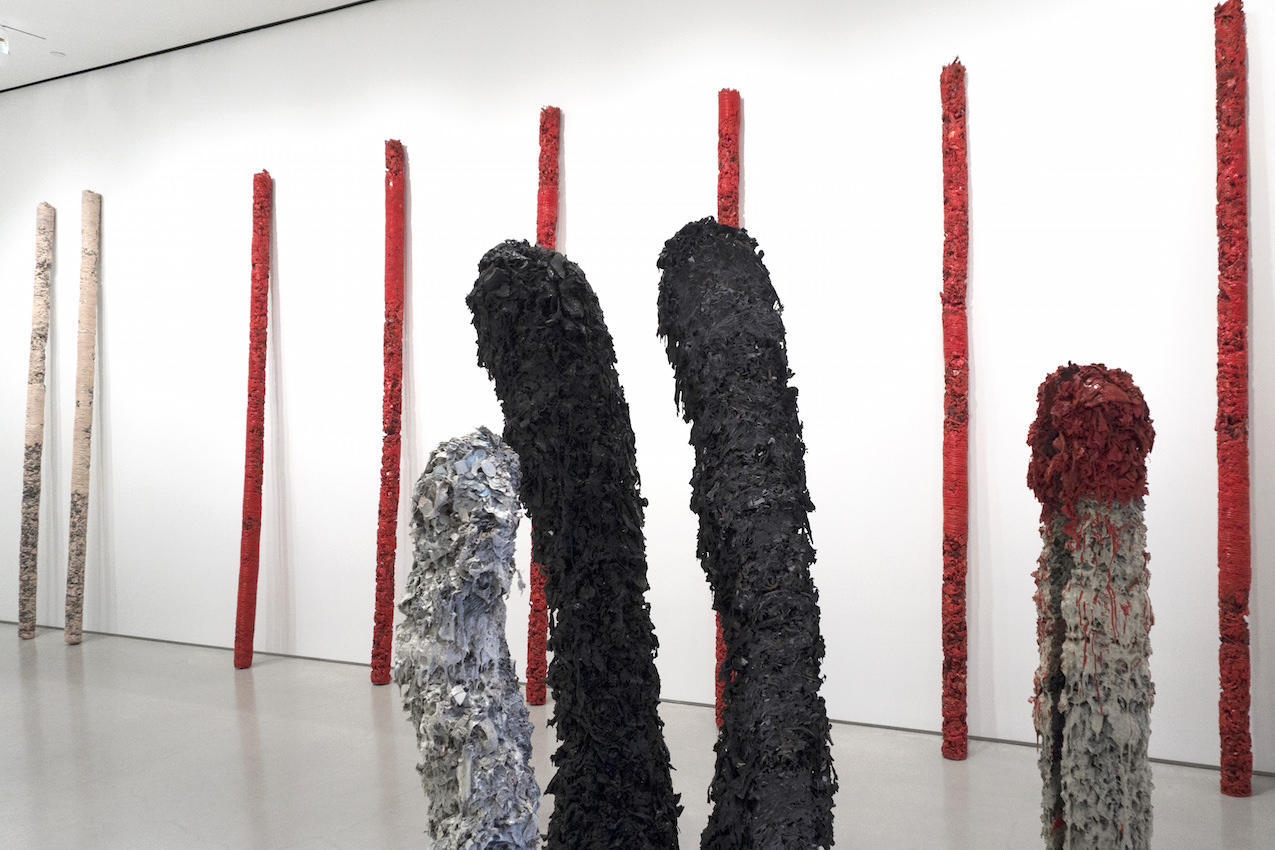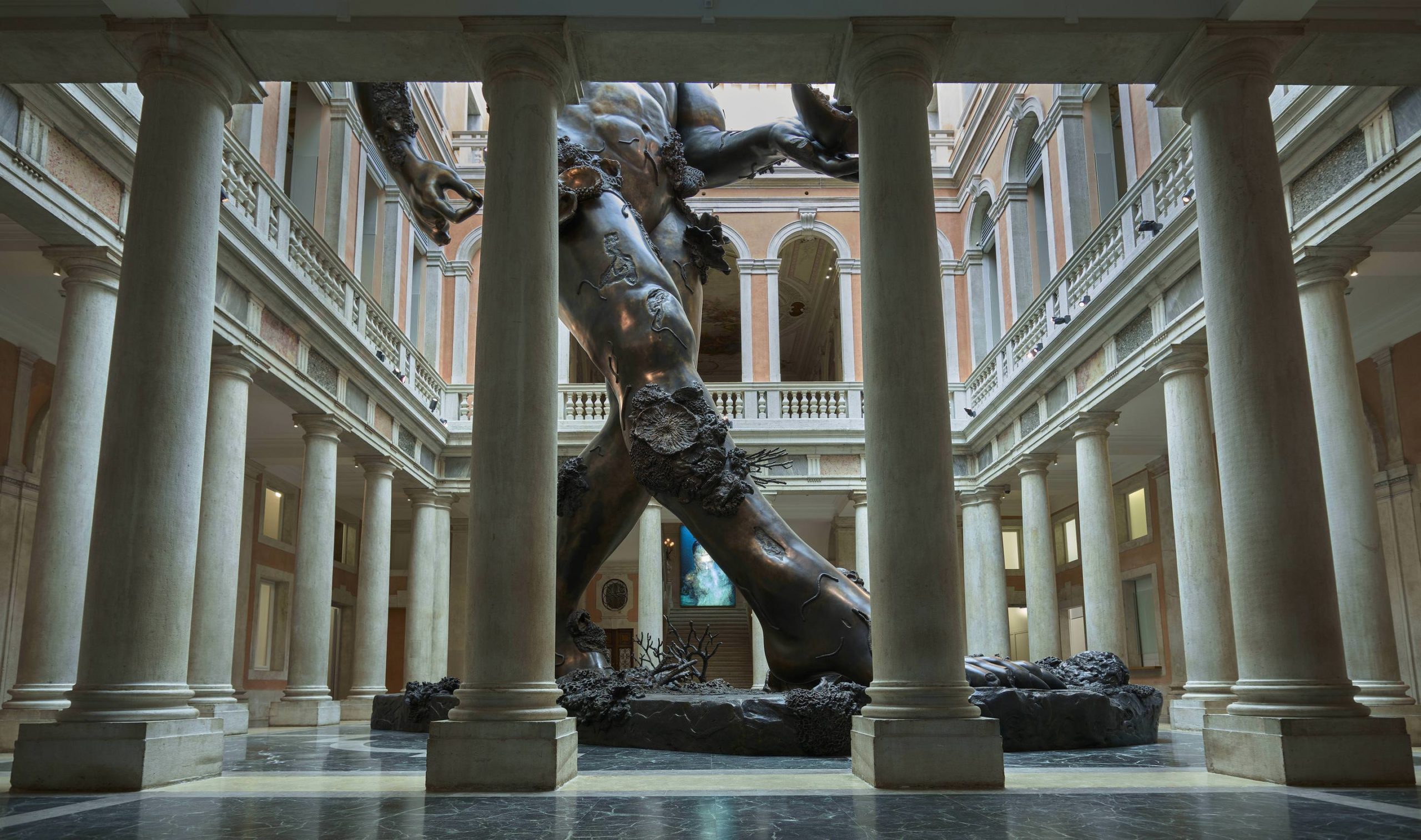This month, Dallas Contemporary debuts three solo exhibitions of work by Dan Colen, Paola Pivi, and Helmut Lang. Each artist’s work, through a variety of methods, center on material—with Colen using trash to create 3D canvases, Pivi choosing feathers to render dangerous animals approachable and charming, and Lang’s employment of organic material to create relics that reference ancient civilizations. Whitewaller spoke with Senior Curator Justine Ludwig to learn more about the shows that are not to be missed during Dallas Art Week.
WHITEWALL: Dan Colen has been investigating some avant-garde materials for a while now—such as bubblegum, tar, and dirt—and he’s discussed letting the material of his medium guide him. How does that attitude come through with his new trash paintings?

I wish I am fish
JUSTINE LUDWIG: In these works, Colen embraces the discarded materials that he finds surrounding his Red Hook studio. These objects comprise the detritus of consumerism. He uses debris as substrates, which he then paints on top of. In many cases, it appears as if the forms of the objects beneath drive the paint application. They add an unexpected and sumptuous depth to these abstract works.
WW: Do you think there is a particular reason why Cohen has gone so much bigger with these recent works?

Photographic print, aluminium, glass, frame, photography by Hugo Glendinning
JL: Trash paintings are dictated by the medium itself. The materials that Colen is embedding in each piece are sizeable to begin with, calling for large-scale canvases. The results are gorgeous, enveloping three-dimensional canvases.
WW: Paola Pivi has talked before about representing people within her animal sculptures. How do you think her choice of more intimidating animals, like bears and crocodiles, impacts that representation?

Photo by Guillaume Ziccarelli
View of the exhibition “Ok, you are better than me, so what?” at Galerie Perrotin New York in September 2013
JL: The interplay between humorous, or whimsical and dangerous, is in many ways a reflection of the human condition. Pivi’s polar bears merge the aesthetic of these animals with stances that recall human figures as they dance or recline. These animals are great hunters and dangerous predators, but through the artist’s interventions, they are transformed into something approachable. Pivi’s works delve into the complexity of character. Nothing is presented as a simple binary.
WW: How do you see Pivi’s fantastic creatures interact with Dallas Contemporary’s gallery setting?
JL: I love the mutability of Dallas Contemporary’s galleries. As a raw industrial space, we are able to transform with each exhibition, allowing the work to take center stage. We are altering the space of the gallery to best suit Pivi’s work and to build an abstract narrative structure for viewers to roam. This exhibition also takes advantage of the massive galleries by presenting a variety of large-scale works.
WW: Helmut Lang has said before that he prefers materials with “scars and memories of a former purpose”—and some of his work incorporates scraps from his old fashion archive. Do you think there’s a new narrative being constructed from these memories?
JL: Many of Lang’s works feel like relics. They have backstory, which adds resonance to the final product. In Lang’s body of work, which will be on view at Dallas Contemporary, he uses sheepskin—an organic material. Lang has an intimate knowledge of material and form, leading to works that transcend the expected constraints of their material. His forms also reference ancient cultures and spirituality, while remaining abstract and resisting the pull of becoming overly didactic.
WW: What sort of effects have you seen the Dallas Art Fair have on the contemporary art scene for the past few years in Dallas?
JL: Last year was my first experience of the Dallas Art Fair. It was exciting to see the high level of galleries featured in the fair, as well as the ability of the fair’s organizers to seamlessly pair local, national, and international gallery. For me, it has been an absolute joy to have colleagues and dear friends from all over the world here in Dallas. I am blown away by the difficult and unexpected work that each gallery brings to the fair, which I see as speaking to the savviness of the community here. I also believe that the fair challenges the Dallas institutions to create exhibitions that speak to an international audience. I hope that over the next few years the fair may also be used as a platform to help Dallas-based artists garner more attention.









